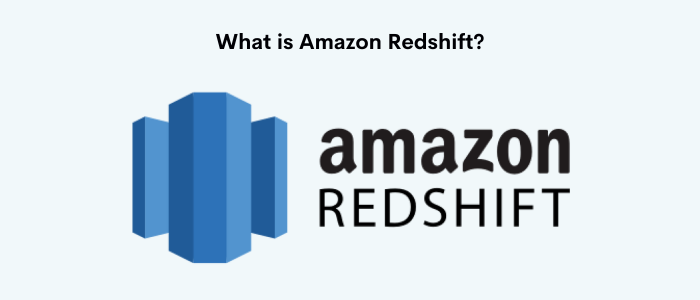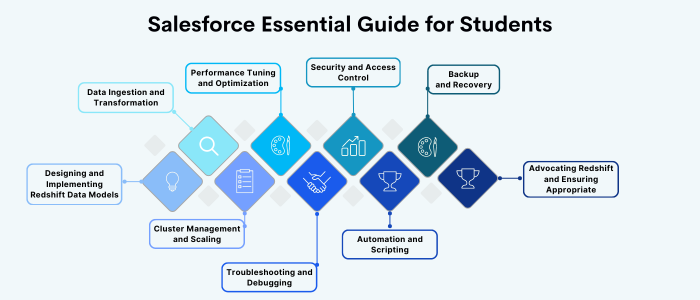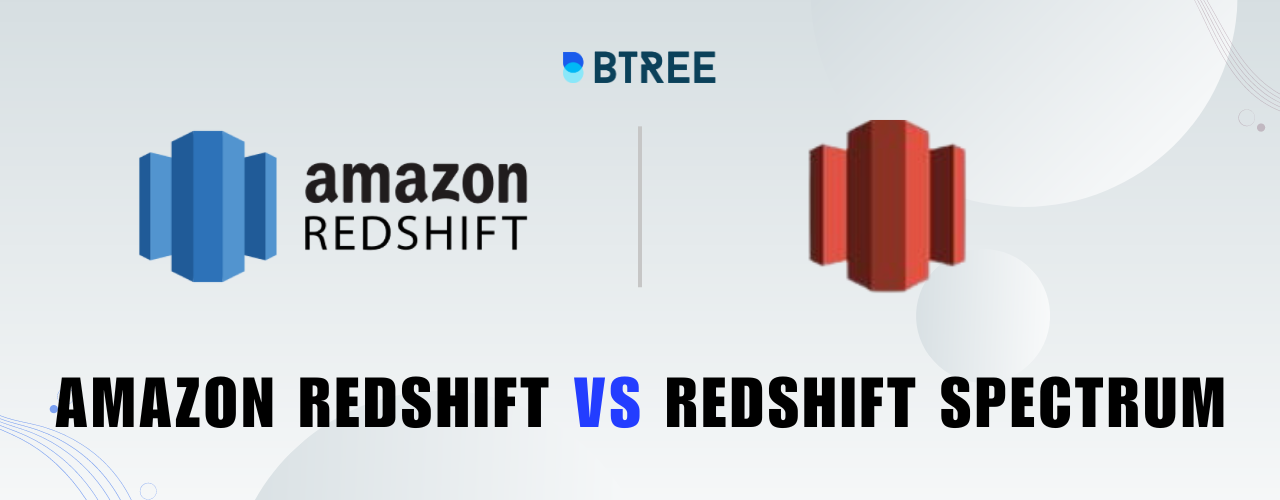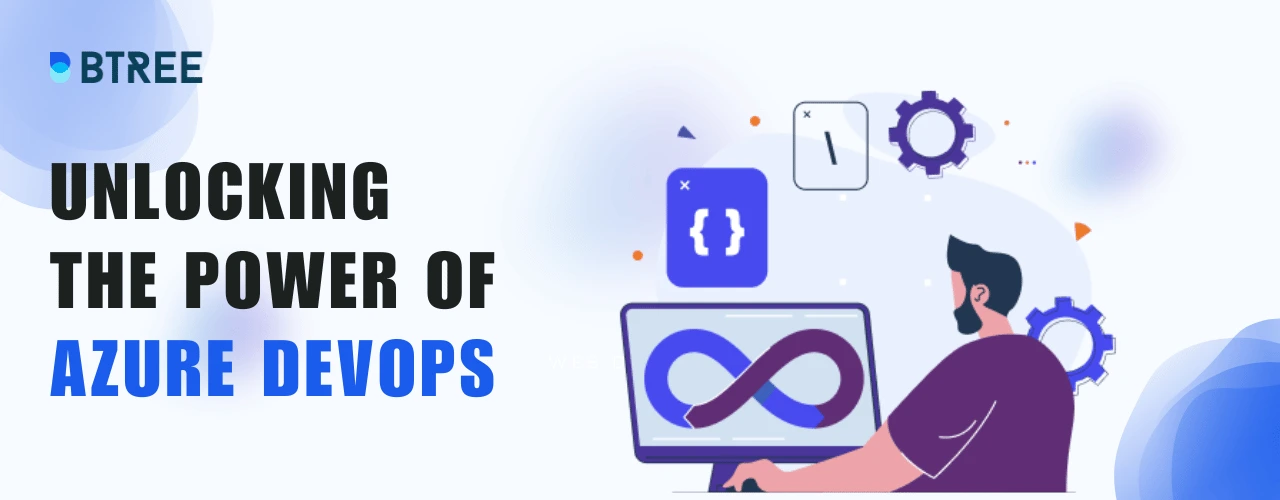
What is Amazon Redshift?

Amazon Redshift is a powerful data warehousing service provided by Amazon Web Services (AWS). Think of it as a giant storage and analysis system that helps organizations organize, store, and analyze large amounts of data. It's like a massive bookshelf that stores all the information a company has collected. More so, it's also designed to help find insights and make better decisions.
Imagine you have a ton of data, such as sales records, customer information, or website activity. Amazon Redshift allows you to store all this data in one place, making it easier to access and work with. It's like having a super organized library where you can quickly find the information you need.
But Redshift doesn't stop at just storing data. It also provides tools to analyze and understand that data. It's like having innovative librarians who can help you discover patterns, trends, and valuable insights hidden within your data. These insights can be used to improve business strategies, make more informed decisions, and better understand customer behaviors.
Here’s a quick overview of the core features of Amazon Redshift:
- Provides a scalable and high-performance solution for organizing and processing massive amounts of data.
- Makes use of columnar storage, which facilitates effective data compression and faster query performance.
- Accelerates data analysis by using parallel processing across numerous nodes.
- Easily interacts with well-liked business intelligence tools, enabling data visualization and producing insightful information.
- Has a cost-effective pay-as-you-go pricing model that guarantees flexibility and affordability.
Key Responsibilities of a Redshift Developer

Designing and Implementing Redshift Data Models
Designing and implementing Redshift data models is a crucial responsibility of an Amazon Redshift developer. This involves creating a structure that organizes and optimizes the data stored in Redshift clusters, enabling efficient data analysis.Now delve deeper into this key responsibilities of Redshift Developer
- Understanding the requirements of the data warehouse: A Redshift developer collaborates with stakeholders to grasp the specific needs and objectives of the data warehouse. By understanding the business goals, they can design data models that align with the organization's analytical requirements.
- Designing the schema and tables for optimal performance: The Redshift developer designs the schema, which serves as the blueprint for organizing the data within Redshift. They determine the best way to structure tables, define relationships between them, and optimize the schema for efficient data retrieval and analysis.
- Implementing data models using SQL and Redshift-specific features: Using the SQL programming language and leveraging Redshift's unique features, the developer translates the data models into actual database structures. They define tables, columns, data types, and constraints, ensuring the integrity and accuracy of the stored data.
- Enhancing query performance through data distribution and sort keys: Redshift provides options for distributing data across multiple nodes and specifying sort keys. A Redshift developer utilizes these features strategically to improve query performance. By distributing data based on commonly queried columns and defining appropriate sort keys, they can minimize data movement and optimize query execution.
- Ensuring scalability and flexibility: A well-designed data model should be scalable and adaptable to future growth and evolving business needs. A Redshift developer considers scalability factors, such as data volume, user concurrency, and query complexity, to ensure that the data model can accommodate increasing demands without sacrificing performance.
Data Ingestion and Transformation
Extracting data from diverse sources and loading it into Redshift is another vital responsibility. Redshift developers transform data to align with the predefined data models. They employ Extract, Transform, Load (ETL) tools and processes for seamless and efficient data integration.
- Extracting data from diverse sources: A Redshift developer gathers data from multiple sources such as databases, data lakes, and external systems. They ensure seamless data extraction, considering factors like data volume and extraction frequency.
- Transforming data for analysis: Before loading data into Redshift, it often requires transformation to align with the data models and enable meaningful analysis. A Redshift developer performs data cleansing, normalization, and aggregation to improve data quality and structure.
- Leveraging ETL tools and processes: Extract, Transform, and Load (ETL) tools and processes are utilized to streamline data ingestion and transformation. These tools automate repetitive tasks, reducing manual effort and minimizing errors.
- Ensuring data integrity and accuracy: A Redshift developer validates the transformed data to ensure its integrity and accuracy. They perform data quality checks, handle missing values, and verify data consistency to maintain data reliability.
- Optimizing data loading performance: Efficient data loading is essential for timely analysis. A Redshift developer optimizes the data loading by leveraging Redshift-specific techniques such as parallel loading, compression, and data distribution strategies.
Performance Tuning and Optimization
Monitoring query performance and identifying performance bottlenecks are critical tasks for a Redshift developer. By analyzing query execution plans and optimizing indexing strategies, they can significantly enhance the overall performance of Redshift clusters.
- Monitoring query performance: A Redshift developer actively monitors the performance of queries running on the Amazon Redshift cluster. They employ various monitoring tools and techniques to track query execution times, resource usage, and system metrics. By closely observing these parameters, they can identify areas where queries are experiencing bottlenecks or performing sub-optimally.
- Identifying and resolving performance bottlenecks: Based on the monitoring data, the Redshift developer analyzes the identified performance bottlenecks. They investigate the root causes of slow-running queries, including poorly designed queries, improper data distribution across the cluster, or inadequate sort key selection. Once the bottlenecks are identified, the developer devises strategies to overcome them.
- Query optimization: To optimize query execution, a Redshift developer employs various techniques. They may adjust join strategies, which involve choosing the most efficient join algorithms based on the dataset characteristics and query requirements. Additionally, they optimize data distribution methods by redistributing data across the nodes to achieve a more balanced workload. The developer also fine-tunes the sort key configurations, ensuring data is stored in the most advantageous order for query performance.
- Implementing indexing strategies: Indexing plays a crucial role in query optimization. A Redshift developer carefully evaluates query patterns and identifies frequently accessed columns. Based on this analysis, they strategically create and manage appropriate indexes on relevant columns. These indexes facilitate faster data retrieval and improve overall query performance.
- Utilizing workload management: Amazon Redshift provides capabilities to prioritize and allocate system resources based on different query types and user priorities. A Redshift developer takes advantage of these features and configures workload management settings to optimize performance for various workloads. They define query queues, assign appropriate resource limits, and manage concurrency to ensure critical queries receive the necessary resources while maintaining efficient system operation.
- Performance testing and benchmarking: A Redshift developer conducts performance tests and benchmarks to evaluate the effectiveness of the implemented optimizations. They design representative workloads and execute them on the cluster, measuring query execution times and resource usage. Through these tests, the developer can fine-tune and refine the optimization strategies, continuously improving the overall performance of the Redshift cluster.
Our Lovely Student feedback
Security and Access Control
Ensuring data protection and maintaining security is of utmost importance. Redshift developers implement appropriate security measures and manage user access and privileges within Redshift. They ensure compliance with industry regulations and best practices to safeguard sensitive data.
- Protecting data: Redshift developers use encryption to keep data safe when it's stored and when it's being sent. This ensures that only authorized people can see the data, keeping it confidential.
- Controlling access: Developers manage who can access the data and what they can do with it. They assign roles to users, giving each person the correct permissions for their job. They also use strong ways to confirm a user's identity, like requiring a password and another verification form.
- Following regulations: Redshift developers ensure that data is stored and used following the rules set by industry regulations, such as GDPR or HIPAA. They put security measures and policies in place to protect sensitive data and meet these requirements.
- Keeping an eye on things: Developers set up tools to watch what's happening with the data. They keep track of who is doing what and look out for any signs of unauthorized access or other security problems. This helps them catch and respond to issues quickly.
- Network security: Developers take precautions to prevent unauthorised access to the Redshift cluster. They establish guidelines for data entry and exit from the cluster, ensuring that only the appropriate connections are permitted.
- Checking for vulnerabilities: Developers frequently look for systemic flaws that attackers might exploit. They stay current on dangers and address any issues they uncover. Data is protected and security breaches are reduced as a result.
- Responding to incidents: In the event of a security breach or incident, developers collaborate with security teams to look into and resolve the issue. They also put safeguards in place to stop similar occurrences in the future.
Backup and Recovery
Developing comprehensive backup and recovery strategies for Redshift clusters is crucial. Redshift developers establish automated backup processes and regularly test the restoration procedures to ensure data integrity and minimize downtime.
- Developing backup strategies: A Redshift developer creates comprehensive plans for backing up data and metadata stored in the Redshift cluster. They carefully consider business requirements and data sensitivity to determine the appropriate frequency and retention period for backups. These strategies ensure that critical data is protected and can be recovered.
- Implementing automated backup processes: Redshift provides automated backup capabilities that a developer takes advantage of. They configure and manage the backup processes, setting up scheduled backups at regular intervals. By automating the backup process, the developer ensures that data is consistently and reliably backed up without manual intervention.
- Testing restoration processes: To ensure the integrity of backed-up data, a Redshift developer regularly tests the restoration process. They simulate different failure scenarios, such as hardware failures or accidental data loss, and perform restoration drills. By doing so, they verify that the backup data can be successfully restored and that the necessary procedures are in place to recover the system effectively.
- Minimizing recovery time objectives (RTO): Redshift developers focus on minimizing the time it takes to recover from system failures. They optimize recovery procedures to expedite the process, ensuring critical services and data are restored as quickly as possible. Leveraging point-in-time recovery options, they enable restoration to a specific time in the past, minimizing the impact of data loss. Additionally, they implement disaster recovery mechanisms, such as replicating data across multiple regions, to enhance system resilience and reduce downtime in case of catastrophic events.
- Monitoring backup and recovery processes: Redshift developers actively monitor the backup and recovery processes to ensure their effectiveness. They review backup logs and perform regular checks to validate the completion and integrity of backups. By monitoring these processes, they can quickly identify any issues or failures and take corrective actions to maintain data resilience.
- Documenting backup and recovery procedures: Redshift developers thoroughly describe backup and recovery techniques in their documentation. They write detailed instructions that spell out how to perform backups, restore data, and recover the Redshift cluster under various circumstances. This documentation aids in ensuring accuracy and consistency in backup and recovery procedures and acts as a reference for the development team.
Cluster Management and Scaling
Creating and managing Redshift clusters is a core responsibility. Redshift developers monitor cluster health and resource utilization, making informed decisions on scaling sets to handle increased workloads efficiently.
What’s more? Here’s an in-depth breakdown of this responsibility:
- Creating and setting up clusters: Redshift developers create and configure new clusters according to workload needs. They choose the right size, type of nodes, and network settings to ensure good performance.
- Monitoring cluster health and usage: Developers keep an eye on the health and performance of the clusters they manage. They regularly check metrics like CPU usage, disk space, and network traffic to spot any issues or bottlenecks.
- Scaling clusters for increased workloads: As workloads grow, Redshift developers adjust clusters to handle the extra demand. They add more nodes or upgrade node types to increase processing power and storage capacity. They can also use features that automatically adjust cluster size based on workload changes.
- Optimizing cluster performance: Redshift developers work on improving cluster performance. They analyze how queries are executed, fine-tune settings, and optimize data distribution. This helps queries run faster and makes better use of cluster resources.
- Managing software updates and fixes: Redshift developers keep clusters up to date by managing software updates and patches. They make sure the latest releases, bug fixes, and security updates provided by Amazon Web Services (AWS) are applied to the clusters
- Backup and restore operations: Redshift developers handle backup and restore tasks for clusters. They ensure that regular backups are done to protect against data loss. If something goes wrong, they can restore clusters to a previous state and minimize data loss.
- Tuning cluster performance: Redshift developers focus on optimizing cluster performance. They examine how queries are executed, find areas that can be improved, and adjust cluster settings accordingly. This helps make queries run faster and improves overall performance.
Troubleshooting and Debugging
One of the crucial responsibilities of a Redshift developer is to address concerns pertaining to data quality, integrity, and system failures. They utilize their expertise to identify and resolve any errors that may arise within Redshift clusters. This entails working closely with cross-functional teams, fostering collaboration to tackle intricate issues and ensure the smooth functioning of the system.
By diligently troubleshooting and resolving problems, Redshift developers play a vital role in maintaining the reliability and performance of the data warehouse.
- Identifying data quality and integrity issues: A Redshift developer focuses on maintaining the quality and integrity of the data stored in the Redshift cluster. They perform data validation checks to identify any inconsistencies, missing values, or anomalies in the data. By implementing data cleansing techniques, they ensure that the data remains accurate and reliable for analysis and decision-making.
- Troubleshooting and system failures: When errors occur or system failures arise, a Redshift developer takes the lead in investigating and resolving these issues. They examine error messages, analyze system logs, and perform diagnostic tests to identify the root cause of the problem. Whether it's a query performance issue, data loading problem, or configuration error, they apply their troubleshooting skills to address the issue and restore the system to regular operation.
- Collaborating with other teams: Complex issues often require collaboration with other teams involved in the data infrastructure. A Redshift Developer works closely with database administrators, data engineers, or other relevant teams to collectively troubleshoot and resolve issues. By leveraging their collective expertise and insights, they can effectively resolve challenging problems and ensure the smooth operation of the Redshift cluster.
- Continuous improvement: Redshift developers continuously strive to improve troubleshooting and debugging processes. They keep up with the latest advancements in troubleshooting tools, techniques, and best practices. By staying informed and incorporating new approaches, they enhance their ability to quickly identify and resolve issues, minimizing downtime and optimizing the performance of the Redshift cluster.
Automation and Scripting
Redshift developers streamline routine tasks by developing scripts and automation tools. By implementing infrastructure-as-code practices, they enhance efficiency and productivity, enabling seamless Redshift deployment and configuration.
This responsibility has only 3 significant aspects to it. This includes:
- Developing scripts for routine tasks: A Redshift developer creates scripts using programming languages like Python or Bash to automate repetitive tasks. These scripts can include data extraction, transformation, loading, or administrative tasks.
- Streamlining processes for efficiency: By automating tasks, a Redshift developer eliminates manual effort and reduces the potential for errors. They streamline processes like data ingestion, backup, monitoring, or schema management to improve overall efficiency.
- Implementing infrastructure-as-code practices: Infrastructure-as-code (IaC) allows developers to define and manage infrastructure resources programmatically. A Redshift developer adopts IaC practices to automate Redshift cluster deployment, configuration, and maintenance.
Advocating Redshift and Ensuring Appropriate
A Redshift developer is vital in evangelizing Redshift within the organization and ensuring its proper utilization. They act as advocates for Redshift's capabilities while also recognizing when it may not be the optimal solution.
- Educating stakeholders on Redshift advantages: A Redshift developer actively promotes the benefits of using Redshift compared to other data warehousing options. They communicate the advantages of Redshift, such as its scalability, performance, and cost-effectiveness, to key stakeholders, decision-makers, and technical teams.
- Evaluating requirements and fit: The developer evaluates project requirements and determines whether Redshift is the appropriate solution. They assess data volume, query complexity, concurrency, and analytical needs. If Redshift is not the best fit, they provide alternative recommendations to ensure the right tool is chosen.
- Preventing overuse and misuse of Redshift: Redshift Developers play a critical role in preventing the overuse of Redshift within the organization. They assess requests for Redshift usage, identifying cases where other data storage or processing solutions may be more suitable and cost-effective. By doing so, they ensure efficient resource allocation and cost optimization.
- Collaborating with teams for optimal solutions: Redshift developers actively collaborate with other technical teams, such as data engineers or architects, to determine the best overall data solution. They engage in discussions and provide insights to ensure that Redshift is utilized with other tools and technologies where appropriate.
- Providing guidance and best practices: A Redshift developer serves as a subject matter expert, providing guidance and best practices to other teams and stakeholders. They share knowledge about Redshift's capabilities, performance optimization techniques, data modeling best practices, and other relevant aspects to enable successful adoption and usage.
Key Takeaways
Amazon Redshift is an incredibly robust data warehousing service offered by AWS, empowering organizations to efficiently manage, store, and derive valuable insights from vast volumes of data. As a developer specializing in Amazon Redshift, you would shoulder a diverse set of responsibilities, each contributing to the success of data-driven operations.
Here are the 7 most important key takeaways:
- Amazon Redshift is a valuable tool that helps companies organize and analyze lots of data quickly.
- Redshift developers have important responsibilities like designing data structures, making queries run faster, and ensuring the system can handle more data as the company grows.
- They also work on getting data from different sources and fitting it nicely into Redshift.
- Redshift developers focus on making sure the system works well and runs fast, fixing any issues they find.
- They also take care of keeping data safe and only letting the right people access it.
- Redshift developers make sure data is backed up regularly, so it doesn't get lost, and they practice restoring data to make sure everything is working properly.
- They manage the Redshift system and ensure it can handle more work when needed, and they try to make it faster and more efficient.
All this together gives you a sneak peek into your future as a Redshift developer. So, now map out and get on with it!
Course Schedule
| Name | Batches | Details |
|---|---|---|
| AWS Training |
Weekend Batch
(Sat-Sun) |
View Details |
| Amazon Redshift Training |
Weekday Batch
(Mon-Fri) |
View Details |
| Google Cloud Platform Training |
Weekend Batch
(Sat-Sun) |
View Details |
Looking For 100% Salary Hike?
Speak to our course Advisor Now !









